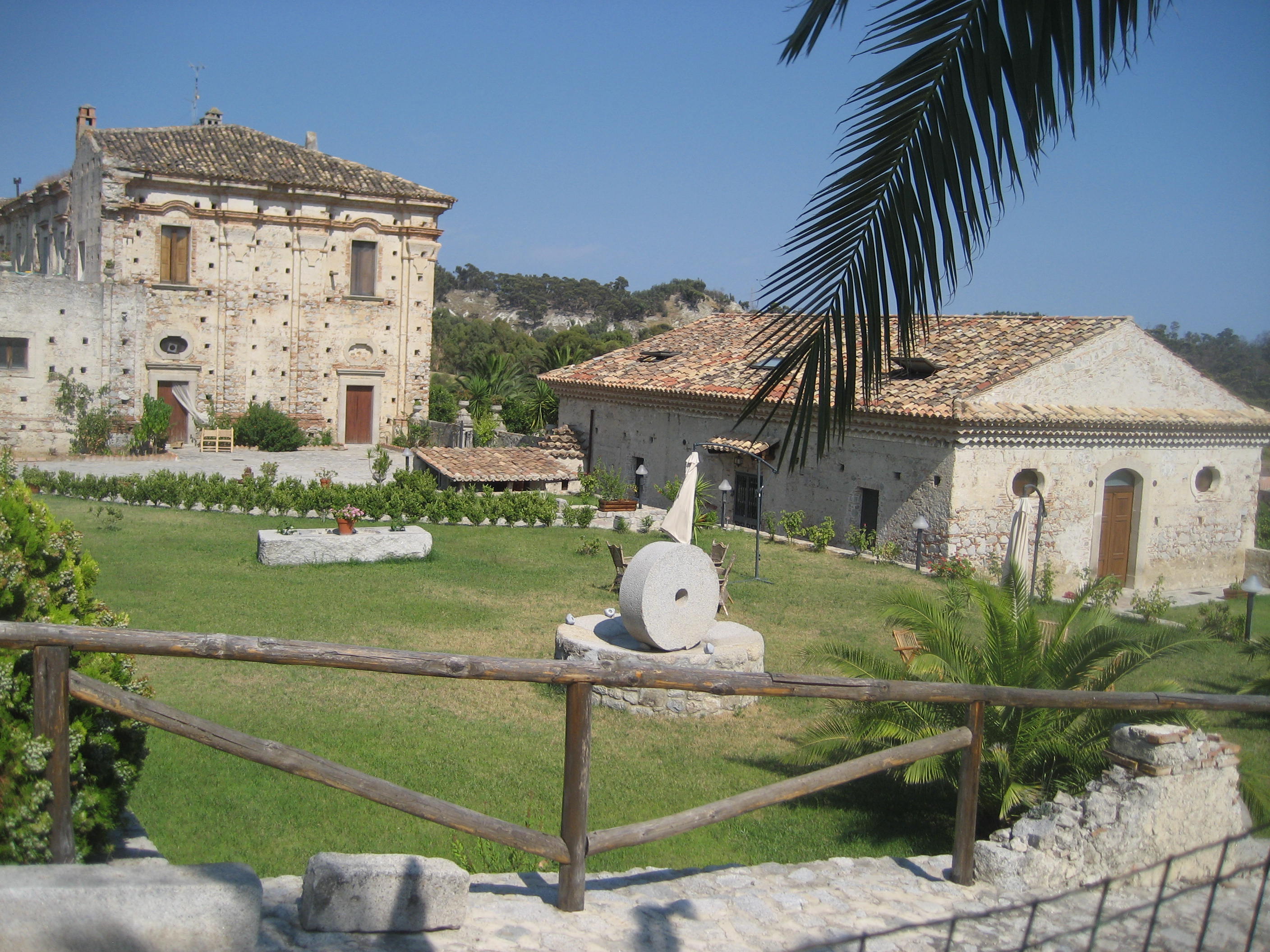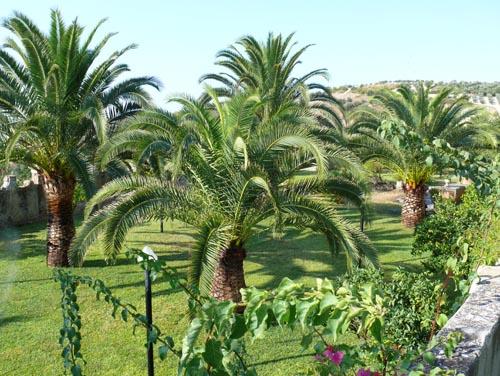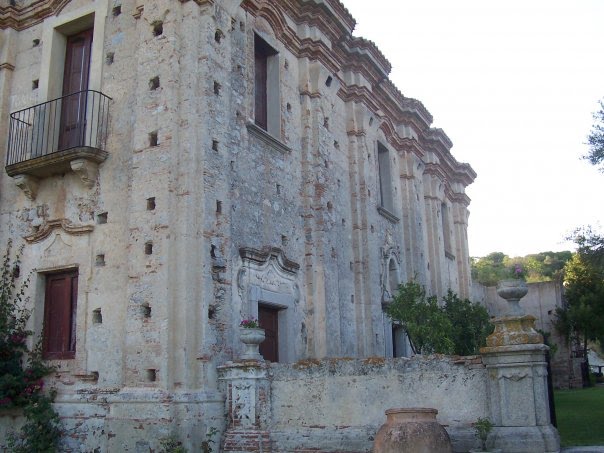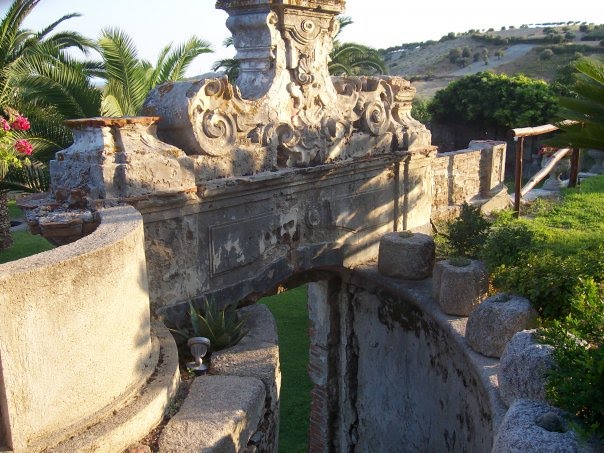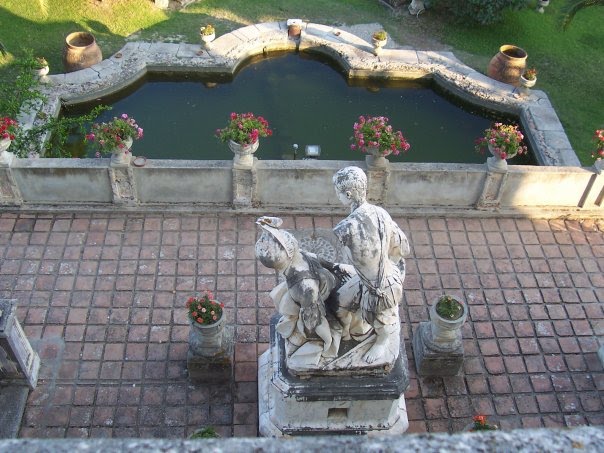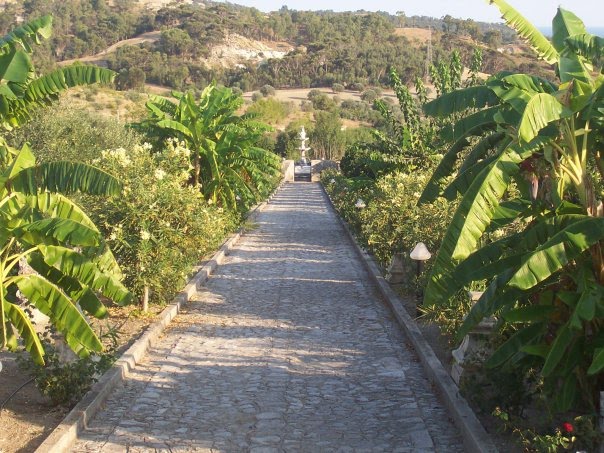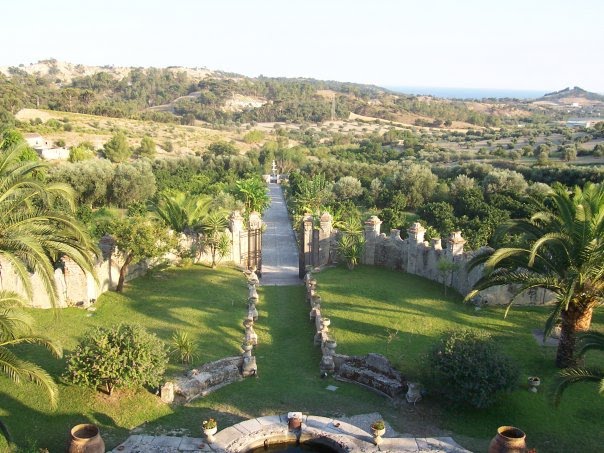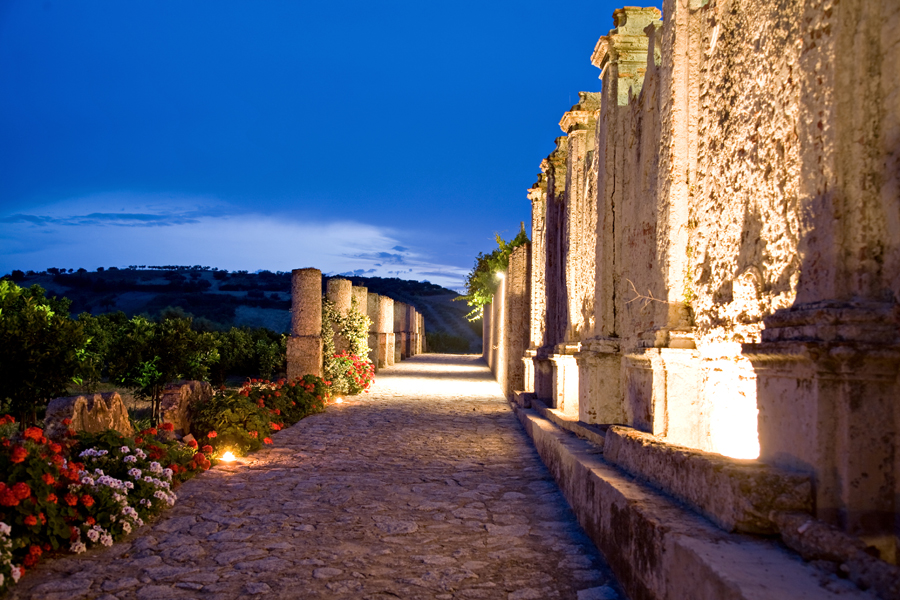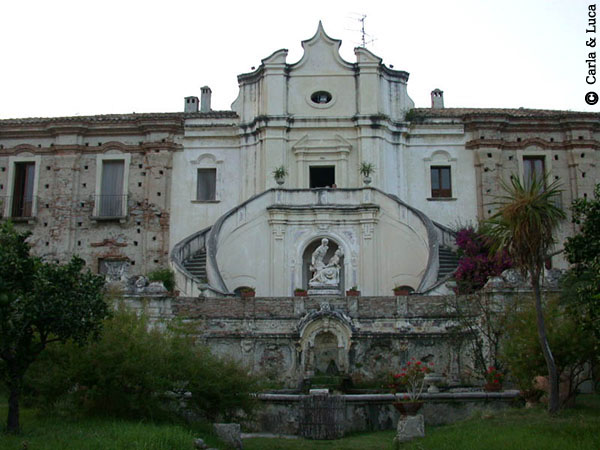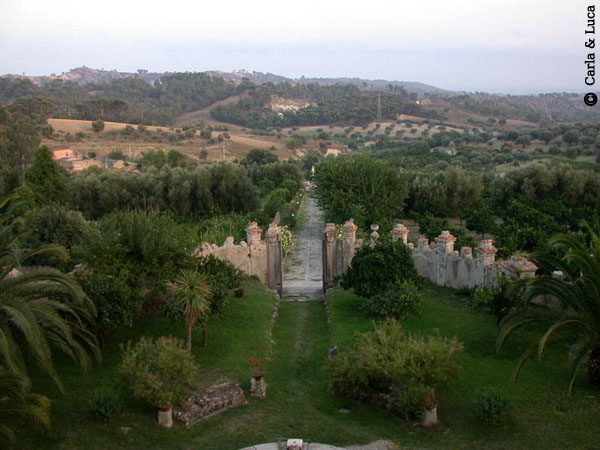
Villa Caristo
This post is also available in:
 English (Inglese)
English (Inglese)
(ENGLISH TRANSLATION BELOW)
Villa Caristo, di proprietà dell’omonima famiglia, è un’importante residenza rurale settecentesca, che rappresenta un prestigioso e significativo esempio dell’arte barocca in Calabria tanto da essere estate inserita nella serie filatelica ‘Le ville D’Italia’ emessa delle Poste Italiane nel 1984, insieme alla Regia di Stupinigi, alla Villa dei principi Mellone di Lecce e al palazzo Doria Pamphili di Genova.
Si narra che sia stata costruita sopra i resti della villa di proprietà del patrizio romano Stenius, da cui prese il nome l’attuale Comune su cui sorge: Stignano.
Attualmente non si è ancora in grado di individuare con certezza l’artefice della progettazione e realizzazione del magnifico palazzo e del parco circostante, che ricordano le ville vesuviane per stile ed eleganza, ma si ipotizza si tratti di Luigi Vanvitelli, Ferdinando Sanfelice o Domenico Antonio Vaccaro, celebri esponenti dell’architettura settecentesca italiana.
Per quanto purtroppo, negli anni, la villa sia stata derubata di molte sue “bellezze”, tra cui un centinaio di statue di Paros, gli imponenti elementi architettonici che la caratterizzano e la ricchezza di particolari tuttora presenti ne lasciano intuire l’originaria bellezza, in virt della quale il critico d’arte calabrese, Alfonso Frangipane (1881-1970), la defini “la più bella e la piu’ architettonica della regione, degna dei dintorni di Napoli, come di Torino settecentesca e di Catania barocca”.
La facciata, costituita da una costruzione a due piani, accoglie una scala a ‘tenaglia’, a cui piedi si trova il gruppo marmoreo di grande pregio, rappresentante Tancredi nell’atto di battezzare Clorinda morente. All’interno, si possono inoltre ammirare una statua di San Leonardo e la cappella gentilizia con tre altari.
(ENGLISH,kindly transalted and published by www.wetheitalians.com)
Villa Caristo, property of the Caristo family, is an important rural mansion of the XVII century. It represents a prestigious and symbolic example of Baroque art in Calabria, so worthy to be included in the philatelic collection of “Le Ville d’Italia” published by Poste Italiane in 1984, with the Regia di Supinigi, Villa dei Principi Mellone in Lecce, and Palazzo Doria Pamphili in Genoa. It is said that it was established upon the ruins of a Roman villa owned by the patrician Stenius, who named the town Stignano.
At the present, experts are not able to identify the creator of the project and realization of the amazing palace and the surrounding park, which reminds for its style the elegant villas around Vesuvius. However, a hypothesis about the architect of the palace is oriented to either Luigi Vanvitelli, Ferdinando Sanfelice or Domenico Antonio Vaccaro, famous exponents of the Italian Eighteenth century architecture.
Unfortunately, through the years, the villa has been robbed of many of its beauties. One of its hundreds statues from Paros, the original majestic architectural elements and the other riches of features, which enhance its authentic beauty.
According to the art historian expert of Calabria’s art, Alfonso Frangipane (1881-1970), the villa was defined: “[the villa is one of] the most beautiful and architectonic palace of the region, worthy to be appreciated around the Neapolitan area, as well as the Eighteenth century architecture in Turin and the Baroque art in Catania”.
On the façade, built on two levels, is represented a pincher staircase, and the lower part is decorated with a group of marble pieces where is depicted the episode of Tancredi who is baptizing the dying Clorinda. Inside the palace are preserved and can be admired the statue of San Leonardo and the noble chapel with three altars.
This post is also available in:
 English (Inglese)
English (Inglese)
Contatti
Stignano(RC)
388 3618365
info@villacaristo.it
Altre info
Visite su prenotazione
